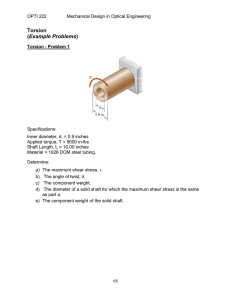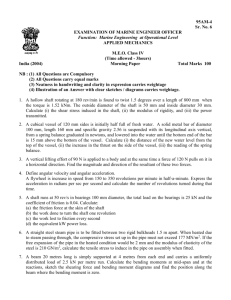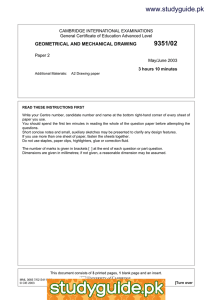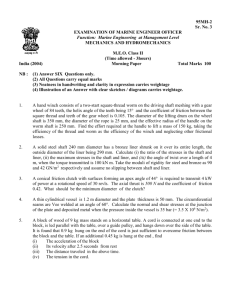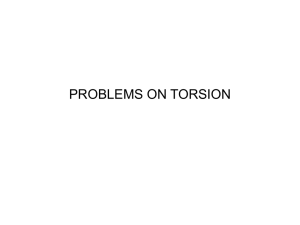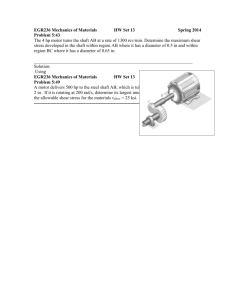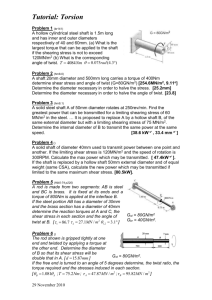www.studyguide.pk
advertisement
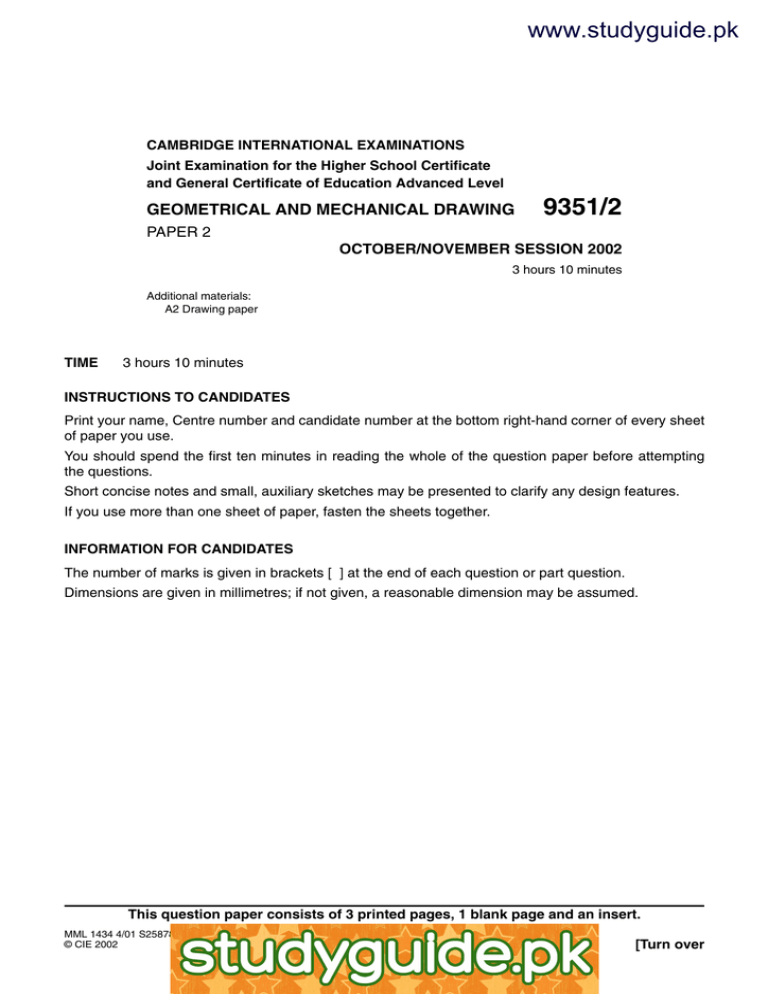
www.studyguide.pk CAMBRIDGE INTERNATIONAL EXAMINATIONS Joint Examination for the Higher School Certificate and General Certificate of Education Advanced Level GEOMETRICAL AND MECHANICAL DRAWING 9351/2 PAPER 2 OCTOBER/NOVEMBER SESSION 2002 3 hours 10 minutes Additional materials: A2 Drawing paper TIME 3 hours 10 minutes INSTRUCTIONS TO CANDIDATES Print your name, Centre number and candidate number at the bottom right-hand corner of every sheet of paper you use. You should spend the first ten minutes in reading the whole of the question paper before attempting the questions. Short concise notes and small, auxiliary sketches may be presented to clarify any design features. If you use more than one sheet of paper, fasten the sheets together. INFORMATION FOR CANDIDATES The number of marks is given in brackets [ ] at the end of each question or part question. Dimensions are given in millimetres; if not given, a reasonable dimension may be assumed. This question paper consists of 3 printed pages, 1 blank page and an insert. MML 1434 4/01 S25878/4 © CIE 2002 http://www.xtremepapers.net UNIVERSITY of CAMBRIDGE Local Examinations Syndicate [Turn over www.studyguide.pk 2 Clutch System The given drawings, in third angle projection, show the components of a Clutch System for a small agricultural machine. Such systems are used to engage and disengage the machine from the power unit. Method of assembly Four M5 bolts (not detailed) are passed up through the counter bored holes in the BASE, to secure the BRACKET with washers and M5 hexagon head nuts (not detailed). The THRUST SHAFT is inserted into the BRACKET with the 10 mm diameter spigot to the front of the BASE. An ARM is then assembled to each end of the THRUST SHAFT, with the 6 mm gussets of the ARMS facing inwards. The ARMS are to be secured to the THRUST SHAFT at a later stage. A roller bearing (not detailed) of outer diameter 50 mm, inner diameter 26 mm and width 30 mm, is pressed into the 70 mm diameter boss of the BASE. The threaded end of the INPUT SHAFT is fed through the roller bearing until the 32 mm diameter collar rests against the outer face of the bearing. Next a sub-assembly is made by: ● ● locating the 114 mm diameter face of the FEMALE COUPLING into the counter bore of the FLYWHEEL, with the two keyways in alignment; bolting the two components together with four M6 bolts length 22 mm, thread length 12 mm (not detailed) inserted from the rear of the FLYWHEEL. This sub-assembly is then placed on to the threaded end of the INPUT SHAFT so that the keyway in the sub-assembly is in alignment with the one in the end of the INPUT SHAFT. A key, 4 mm square and 22 mm long (not detailed) is inserted into the mating slots, and the sub-assembly is then locked to the INPUT SHAFT by an M18 hexagon head nut and a spring washer (not detailed). A second sub-assembly is then made by: ● ● ● ● screwing the SPRING GUIDES into the M5 holes on the collar of the SPLINED SHAFT from the counter-bored face and locking these in position with M5 hexagon head nuts (not detailed) on the rear face of the collar; placing a cylindrical helical compression spring (not detailed) of 20 mm diameter and 50 mm free length, over each SPRING GUIDE so that the springs locate in the counter bored holes on the collar of the SPLINED SHAFT; sliding the BOBBIN on to the SPLINED SHAFT so that the counter-bored holes are in alignment with the SPRING GUIDES and the compression springs; placing the PLAIN BEARING over the 20 mm diameter end of the SPLINED SHAFT. The tapered end of the BOBBIN is inserted into the open end of the FEMALE COUPLING, and the springs compressed until the PLAIN BEARING locates in its seating at the top of the right hand section of the BASE. The BEARING CAP, secured by M5 hexagon head bolts, 25 mm long (not detailed), is then used to hold this sub assembly in position. The two sections of the THRUST CARRIER are then placed round the BOBBIN so that the internal spigots locate in the 10 mm wide groove of the BOBBIN, and the external spigots locate in the 8 mm diameter holes in the two ARMS. The two sections of the THRUST CARRIER are then fixed together with M5 bolts, 15 mm long, and hexagon head nuts (not detailed). The ARMS are then secured to the THRUST SHAFT by 3 mm diameter pins, 24 mm long (not detailed). 9351/2/O/N/02 www.studyguide.pk 3 To complete the required views, a number of design features need to be considered. Minor modifications may be made to the given components. It is essential that the designed items are drawn in accurately on the required views. These should be supported by annotated sketches suitably positioned on your answer sheet. The design features are: (i) a method of lubricating the shaft rotating inside the PLAIN BEARING; [3] (ii) an attachment to the spigot end of the THRUST SHAFT that will enable the clutch to be operated by hand, easily and safely. [8] Your solution must include details of sizes, materials, method of fixing and method of transmitting positive drive through the THRUST SHAFT. Answer the following questions using either first or third angle projection. 1 Draw, FULL SIZE, the following views of the assembled clutch, with the ARMS shown in the vertical position. (a) A view looking in the direction of arrow A shown on the drawing of the BASE. This view should be shown sectioned on the cutting plane X-X. [47] (b) An end view projected from (a), looking in the direction of arrow B shown on the drawing of the BASE. One half of this view must be an outside view, and the other half should be shown sectioned on the cutting plate Y-Y shown on the plan view of the BASE. [27] 2 Draw the symbol of projection used to answer question 1, in the BOTTOM RIGHT HAND CORNER of your drawing. [3] 3 Set out a PARTS LIST tabulating the major components of the clutch. Identify these components on the assembly drawing in a suitable manner. Tabulate also, suitable materials from which the components could be manufactured. [12] Note 1 Hidden detail is not required on any view. 2 Sizes not shown are left to your own discretion. 9351/2/O/N/02 www.studyguide.pk 4 BLANK PAGE 9351/2/O/N/02
